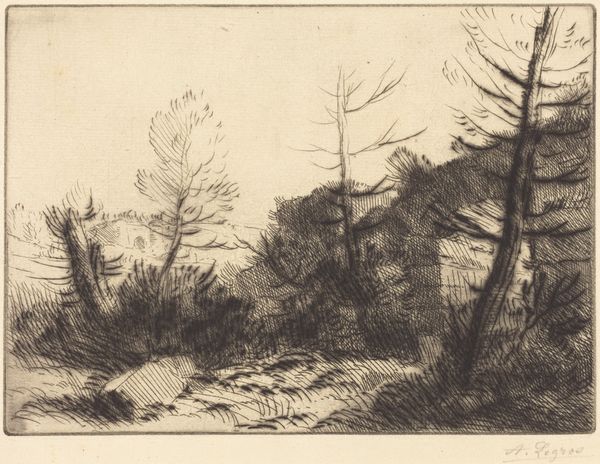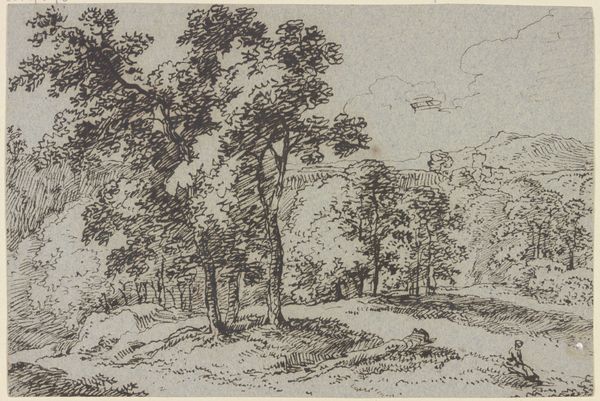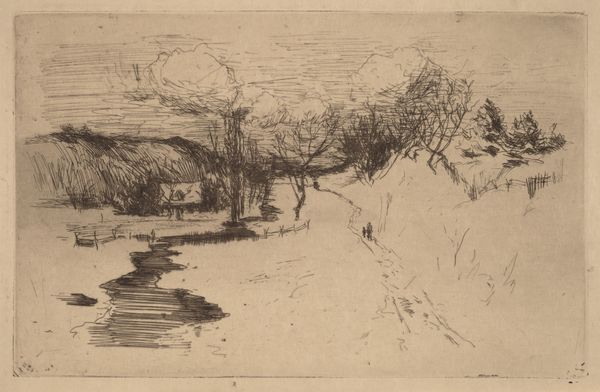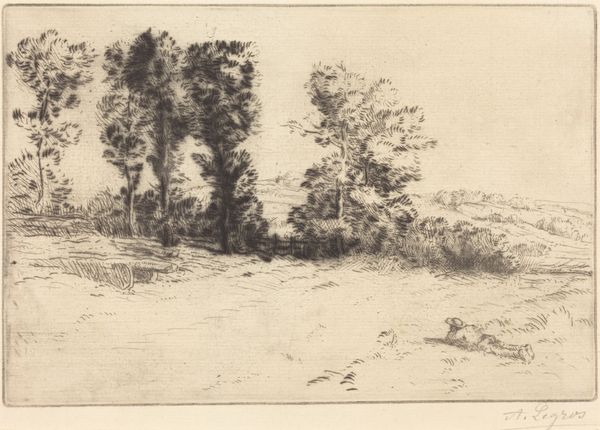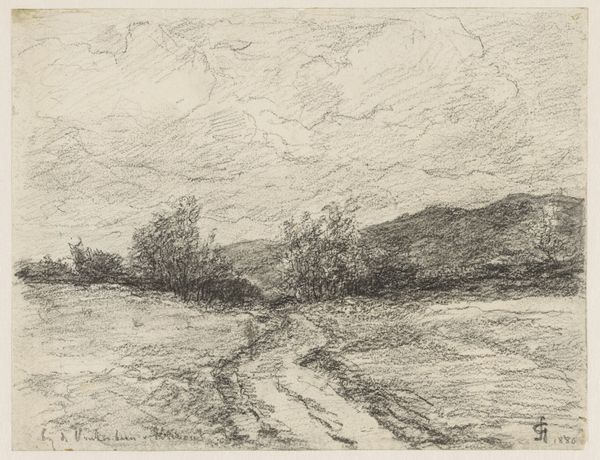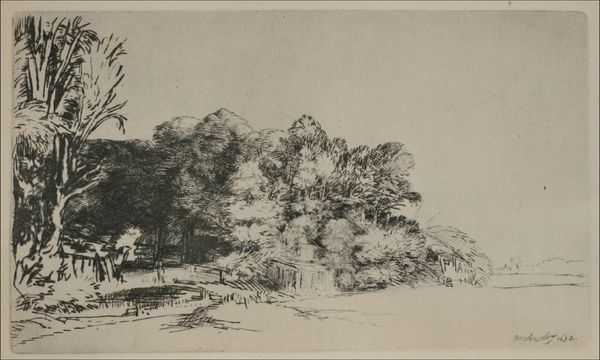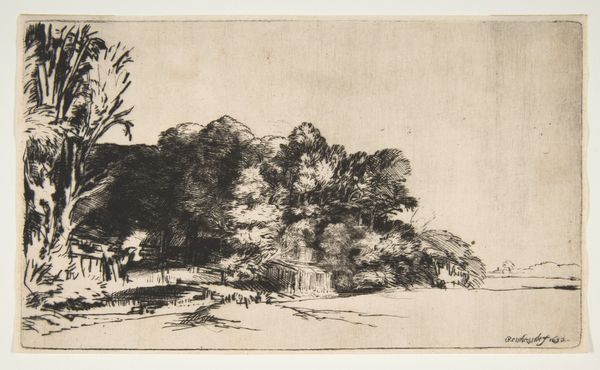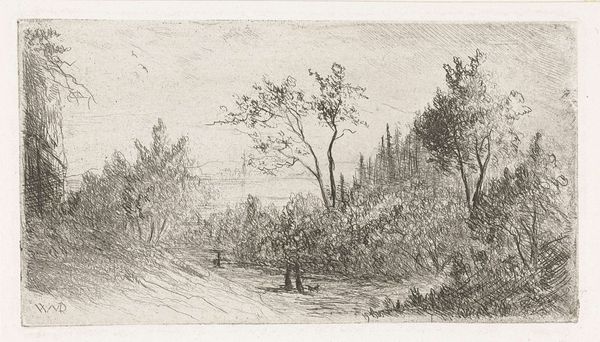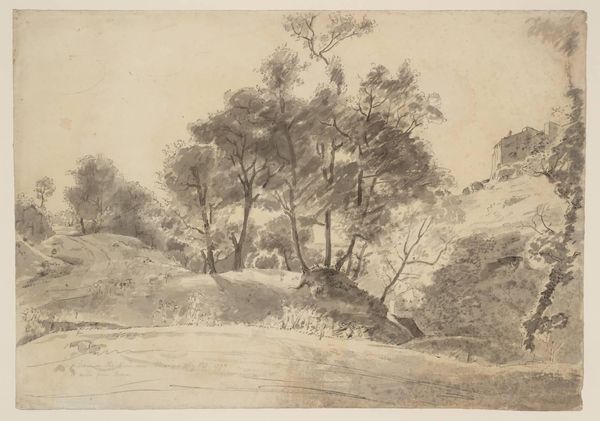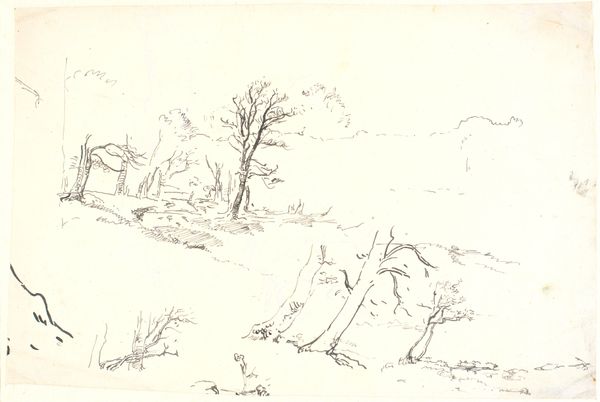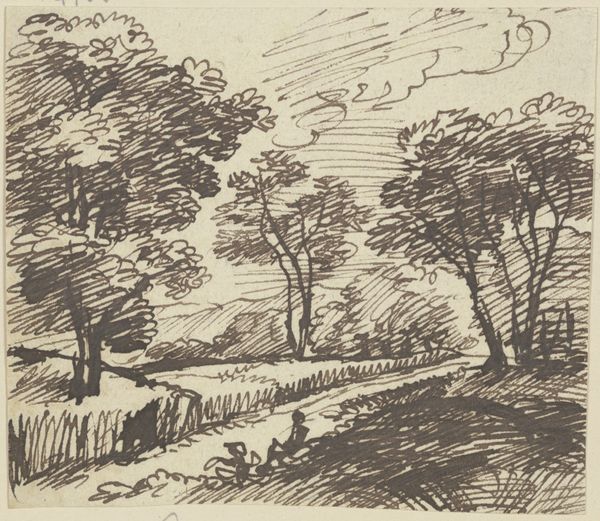
drawing, pencil
#
drawing
#
dutch-golden-age
#
pencil sketch
#
landscape
#
pencil
#
realism
Dimensions: height 198 mm, width 310 mm
Copyright: Rijks Museum: Open Domain
Editor: So, this is "Wandelpad met aan weerszijden bomen," or "Walking Path with Trees on Both Sides," attributed to Egbert Rubertus Derk Schaap, sometime between 1872 and 1939. It’s a pencil drawing, a landscape sketch really. What strikes me is how... unassuming it is. What do you see in this piece? Curator: I see a negotiation between artistic freedom and public expectation. Landscape art during this period became increasingly democratized. The rise of the middle class fueled demand for relatable, accessible imagery, often celebrating the local landscape. The unassuming quality, as you called it, speaks to a shift away from idealized, grandiose landscapes. Editor: Interesting. So, the "everydayness" of the scene is actually significant? Curator: Precisely. Ask yourself, what is Schaap *not* showing us? No dramatic vistas, no allegorical figures... It's just a path and some trees. This reflects a growing interest in realism and naturalism but also ties into institutional changes; art societies and smaller galleries provided platforms for artists like Schaap, who might not have found patronage under older, more rigid systems. Do you notice the subtle tonal variations? Editor: Yes, the way the light filters through the leaves, creating darker and lighter patches. Is that also about realism? Curator: Partly, but also technique. Pencil allows for a subtlety of shading that suggests atmosphere without being overtly representational. What do you think the impact of readily available and affordable materials like pencils have upon Dutch landscape imagery at this time? Editor: I guess it meant more artists could depict their everyday surroundings. It wasn't just the wealthy commissioning grand paintings of estates anymore. Curator: Exactly! It makes you wonder about Schaap’s intentions. Was this sketch intended as a study for a larger work, or as a piece in its own right for an emerging art market? The ambiguity, to me, is fascinating. Editor: I never considered the social context of landscape sketches. Thanks for widening my perspective. Curator: It’s important to remember that even seemingly simple landscapes reflect broader societal shifts. Considering those elements adds layers of depth.
Comments
No comments
Be the first to comment and join the conversation on the ultimate creative platform.

